Moving from Silence to Action: Race and Racism in Postsecondary Language Classrooms
Racism is present in postsecondary language classrooms throughout the world. Research shows that a connection exists between race and language teaching, but more importantly, racist and colonial foundations persist in the language classroom (Kubota & Lin, 2006). This can be seen through the classroom presence of epistemological racism, White supremacy, and social hierarchical power structures.
The new IGI Global book, Interrogating Race and Racism in Postsecondary Language Classrooms (Huo & Smith, 2024), takes an important step forward by investigating race and racism in postsecondary language classrooms, how race interacts with language, how power impacts and shapes language teaching and learning, and how hegemony and ideology perpetuate linguistic injustice and discrimination against racially minoritized students and instructors. It also examines how racism has created institutional, structural, and individual barriers for language teachers and learners in higher education. It does this by applying and integrating major theoretical frameworks, embracing various discourses, narratives, stories, and counter stories in different geographic and language teaching contexts, including a collection of liberatory and emancipatory anti-racist and anti-oppressive pedagogies in global postsecondary language teaching contexts, and using intersectionality between language and race to problematize raciolinguistic injustice and hierarchy.
As educators, we can not be silent on the presence of race and racism in postsecondary language classrooms. Instead, we should “examine the intersectionality of language and race to understand linguicism and the historical contextual basis that frames discourse around English language education, and how it interplays and intertwines with race, racial identity, and racialization” (Holden & Smith, 2024, p. 317).
-Clayton Smith
References:
Huo, X., & Smith, C. (2024). Interrogating race and racism in postsecondary language classrooms. IGI Global. doi: 10.4018/978-1-6684-9029-7
Kubota, R., & Lin, A. (2006). Race and TESOL: Introduction to concepts and theories. TESOL Quarterly,40(3), 471–493. doi:10.2307/40264540
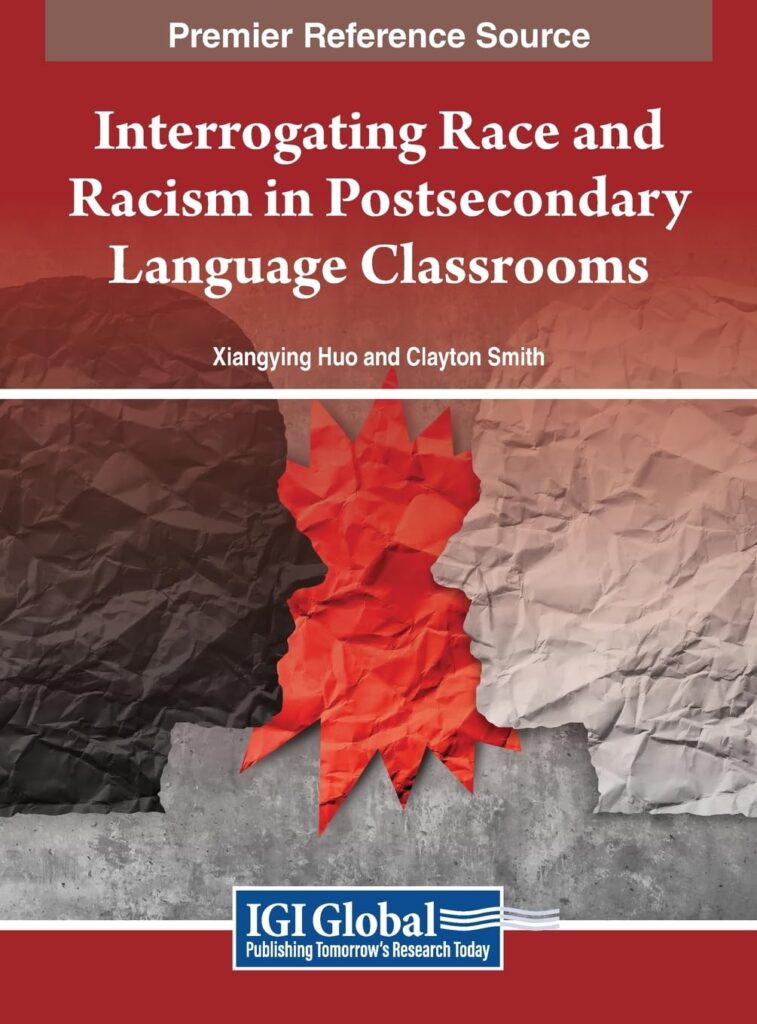
Student Perspectives on the Promising Practices for Teaching International Students
In our 2022 IGI-Global book, Handbook of Research on Teaching Strategies for Culturally and Linguistically Diverse Students, we explored the promising practices for teaching linguistically and culturally diverse international students by providing the student voice on such topics as culturally responsive education, pedagogy internationalization, teaching about academic integrity, student development and support, and online teaching and learning.
In our foundational work, we conducted a mixed methods study that reviewed the promising teaching practices to teach international students by evaluating the rate of student-satisfaction levels and perceptions of learning (Smith et al., 2019). The research design included a pilot study, an online survey questionnaire, focus-group discussions, and individual interviews. Research participants, with a response rate of 32 percent, were international students who studied at a mid-sized, comprehensive, public university in Canada. The primary research question is: What promising teaching practices yield high levels of international student satisfaction and perceptions of learning?
It was guided by three theories (Figure 1). The primary theory used is Tinto’s (1993) student integration model, which states that students must integrate into both social and academic settings, formally and informally, to create a connection with their postsecondary institution, resulting in them making a commitment to careers and educational goals. The researchers also relied on the work of Darby and Lang (2019), which highlights the connection between instructor personality and learning, and Tran’s (2020) framework for teaching and learning for international students, which underlines the importance of connecting with academic and social experiences.
Figure 1. Identifying Effective Teaching Practices (Smith et al., 2019)

Promising teaching practices received from respondents, that were reported as satisfied or very satisfied, varied from 49.7% to 82.9%. The teaching practices with the highest respondent satisfaction percentages (greater than 70%) fell into eight areas (Figure 2): academic integrity, assessment, assignments, clarifying expectations, communicating outside of the classroom, lecture design and delivery, verbal communications, and visual communications. All the promising teaching practices identified as having high levels of student satisfaction also have medium or high student perception levels of learning.
Figure 2. The Top Eight Promising Teaching Practices (Smith et al., 2019)

In the focus group and interviews (Figure 3), students’ responses were mainly positive. Most of them identified instructors as a key factor in the learning experience. Some characteristics (e.g., humour, encouragement and support, and the value of diverse cultures) were welcomed by students. Many practices were endorsed by students of all educational levels, including a student-centred approach, the use of interactive teaching methods, specific and prompt feedback, the use of practical experiences, a pleasant learning environment, and methods to support additional language learners. Undergraduate participants were interested in academic support, updated curricula, and partially filled slides in advance of class. They also emphasized the importance of experiential and applied learning, and close interaction with instructors. Graduate students spoke of the importance of a free learning environment, multi-modality teaching strategies, the use of digital and visual materials, and emotional, physical, and non-judgmental support from their supervisors. Teaching methods that led to students becoming bored and having heavy workloads, such as grammar-intensive teaching, and the use of the repeating-listening pattern of teaching and learning, along with a lack of encouragement, received dissatisfaction from students. There are some differences between course-based and research-based graduate student responses. Course-based graduate students commented on their course instructors and teaching methods, while research-based graduate students mostly commented on their relationship with supervisors.
Figure 3. Teaching practices that contribute the most to learning (Smith et al., 2019)

This study identified teaching practices that result in both student satisfaction and student perceptions of learning. Many students called for a multi-modal teaching style that combined traditional lectures and interactive methods. They also described some instructor characteristics as important factors in the student experience. Our research study found that the most promising teaching practices identified as having high levels of student satisfaction also have medium/high student perceptions of learning.
We are continuing our work through the creation of an online teaching international students website (https://teachintlstud.com/) that includes a professional development toolkit, resources for teachers, a professional community of practice, and a blog on teaching culturally and linguistically diverse students.
-Clayton Smith and George Zhou
REFERENCES
Darby, F., and Lang, J. (2019). Small teaching online. John Wiley & Sons.
Smith, C., Zhou, G., Potter, M., and Wang, D. (2019). Connecting best practices for teaching linguistically and culturally diverse international students with international student satisfaction and student perceptions of student learning. Advances in Global Education and Research, 3, 252-265. 24
Tinto, V. (1993). Leaving college: Rethinking the causes and cures of student attrition. University of Chicago Press.
Tran, L. T. (2020). Teaching and engaging international students: People-to-people connections and people-to-people empathy. Journal of International Students, 10(3), xii-xvii. https://doi.org/10.32674/jis.v10i3.2005
For more details on this study, see: Smith, C., & Zhou, G. (2022). Teaching culturally and linguistically diverse international students: Connections between promising teaching practices and student satisfaction. In C. Smith & G. Zhou (Eds.), Handbook of research on teaching strategies for culturally and linguistically diverse international students (pp. 1-16). IGI-Global.
SEM and Systems Thinking
Christine Kerlin (2008) wrote that “Enrolment management is a comprehensive and coordinated process that enables a college or university to identify enrolment goals that are allied with its mission, its strategic plan, its environment, and its resources, and to reach those goals through effective integration of administrative processes, student services, curriculum planning and market analysis” (p.11). It is a holistic process that plays out across the student learning journey from inquiry to graduation. And its fundamental premise is that we must look at our enrolment health and sustainability throughout the entire student experience as we link, integrate, and extend enrolment management across our campuses.
Each of us has a role in developing and sustaining the SEM ecosystem on campus. We need to engage in shared responsibility. If SEM reflects institutional identity and culture, it becomes an institution-wide strategy owned by each member of the community. This is best achieved through lateral communication where open and frequent communication becomes part of the culture. Hossler, Bean, and associates (1990) said it well when they wrote “The more people involved in decision making, the greater the commitment to implementing the decision” (p. 35).
One of the best ways to do this is to adopt a systems thinking approach. Peter Senge (2006) described systems thinking as “…a discipline for seeing wholeness rather than parts, for seeing patterns of change rather than static snapshots, and for understanding the subtle interconnectedness that gives living systems their unique character” (pp. 68-60). Systems thinking allows SEM practitioners to create a fully embedded enrolment management system that engages campus leadership, faculty, the SEM steering committee, and operational working groups. We have long known that enhanced integration and participation of all key campus stakeholders is a necessary pathway to achieving enrolment management effectiveness on our campuses (Smith, 2000).
If you want to learn more about SEM and systems thinking, consider joining me for the “Systems Thinking is the Key to SEM Success” pre-conference workshop at this year’s SEMM Forum in Toronto on Tuesday, November 7th, from 9:00 a.m. to 12:00 p.m, at the Mariott Downtown at Toronto Eaton Centre. In this workshop, participants will learn and discuss the basics of systems thinking and how institutions can introduce and support the implementation of an enrolment management ecosystem.
-Clayton Smith
References:
Hossler, D., Bean, J. & Associates (1990). The strategic management of college enrollments. Jossey-Bass.
Kerlin, C. (2008). A community college roadmap for the enrollment management journey. College and University, 83(4), 10-14.
Senge, P. M. (2006). The fifth discipline: The art and practice of the learning organization. Doubleday. https://www.seeing-everything-in-a-new-way.com/uploads/2/8/5/1/28516163/peter-senge-the-fifth-discipline.pdf
Smith, C. (2000). The perceptions of college and university enrollment managers on the relationship between institutional enrollment performance and enrollment management effectiveness. College and University, 76(1), 15-19. https://doi.org/10.2190/DJCF-Q6MB-35AV-EBW
Pathways to Post-Pandemic Enrolment Growth in Higher Education
Recently, Stefanie Ivan, an enrolment management consultant and Royal Roads associate faculty, and I had an opportunity to facilitate a webinar on “Pathways to Post-Pandemic Enrolment Growth in Higher Education.” This is a follow-up webinar to the one we conducted on post-pandemic higher education enrolment trends (see my earlier blog) in February.
We asked participants to share their most effective strategic enrolment management (SEM) strategy efforts. We then asked them to describe strategies for enrolling and supporting international, Indigenous, and domestic learners. Lastly, we asked them to say a bit about the learner and student support they provided.
When asked to provide one word that describes the effectiveness of current SEM strategy efforts, the most frequently mentioned were disconnected, work-in-progress, and growing. Others identified include developing, unsure, hopeful but slow, disjointed, uninformed, innovative, ongoing, challenging, deepening, modest, and uncertain. It appears that the experience with SEM is quite variable with some saying it is stalled while others report it as in progress or growing.
We then asked about strategies in use to enrol/support specific types of students. Below are some of the comments we heard.
International Students:
- Work closely with our key agents and agent relations management; strengthen relational networks
- Develop a personal connection to the institution and community
- Targeting markets that connect with Canada’s labour shortage areas
- Provide incentives that are appealing to international students
- Optimize admissions processes
- Utilizing a group effort to recruit international students
- Develop personal communications
- Have not returned to accepting international students yet
Indigenous Students:
- Focused listening and working with communities to address their concerns and needs; engaging communities through partnerships
- Developed an Indigenous strategic plan
- Established an Indigenous scholars’ circle
- Increasing and deepening supports
- Going to communities with incentives, application forms, and testing formulas for completion on-site
- We are not currently recruiting Indigenous students
Domestic Students:
- Balancing in-person and online events
- More first-year transition strategies to help retention and success
- Target movement in the job market and second-career students
- Utilize a blended delivery model for full-time and part-time students
- Work toward understanding what students and employers
- Reach out to withdrawn student
- Establish better support services, create more webinars/engagement, partner with community organizations, and follow-up strategies
- Treat in-country ESL/ELL students as domestic prospects
Learner and Student Support:
- Online advising
- Development of non-academic learning communities
- Increased/streamlined communications (phone, email, forums, chatbot, extended hours, weekends)
- 1:1 wellness check-ins
- Alternative accommodations for learners who need it
- A strong return to in-person and social and co-curricular activities
- Entering students into classroom settings right away to determine learning needs
Here is the Video from the webinar.
With so much to do to stabilize and grow enrolments during these post-pandemic days, it will be important to be strategic and there is no better way to do this than through adopting and implementing SEM!
-Clayton Smith
Canadian Post-secondary Enrolment Trends
Recently, Stefanie Ivan, an enrolment management consultant and Royal Roads associate faculty, and I had an opportunity to identify enrolment trends facing Canadian higher educational institutions for a series of Royal Roads University webinars. In this blog, I will share what we found.
Let me describe our methods. First, we reviewed publicly-available data on the web that included provincial data reports as well as those compiled by Higher Education Strategy Associates, Globe and Mail, Statistics Canada, Canadian Undergraduate Survey Consortium, and the Council of Ministers of Education. Second, we collected comments from our social media network and Canadian colleagues. Third, we received input from students currently enrolled in the Royal Roads University Graduate Certificate in Strategic Enrolment Management.
Here are some of the aggregate enrolment trends we uncovered:
- College enrolments are continuing to grow, mostly due to continued international student enrolment growth. Some declines were reported in the Maritimes. Also, there is a reduction in demand for trades programming due to low unemployment.
- University enrolment is mostly stable or recording slight increases/decreases. Some of this is due to part-time student enrolment increases.
- Students may be shifting away from big urban research universities.
- A slight increase in inter-provincial mobility was experienced in the Maritimes.
- Admission conversion rates are becoming less predictable.
- Completion rates have been impacted in some areas.
- There is a growing interest in a gap year for direct-entry high school students.
And here are the student-type enrolment trends we found:
- Indigenous enrolment and completion rates are lower than rates for non-Indigenous persons. But the Indigenous birthrate is still the fastest among the groups monitored.
- International student enrolments continue to lead enrolment growth.
- Attrition rates are still impacted by the pandemic and high school students who did not seem to be prepared for post-secondary studies.
- The enrolment mix continues to change. Visible minorities, learners with disabilities, and learners with mental health issues are increasing.
- Students want to be primarily on campus, with some hybrid instruction.
- Trust building with communities continues to impact some enrolment.
Here is the Video from the webinar.
We will be doing a follow-up webinar to explore the enrolment strategies that institutions are using to address these challenges. Feel free to share any strategies your institution is using or hoping to implement in the next year, and we will include them when we present on this topic for our follow-up webinar on Tuesday, March 21st. Here is a link to sign-up if you want to listen in or (hopefully!) participate in our discussion.
The times are certainly uncertain and changing.
-Clayton Smith
Interrogating Race and Racism in Postsecondary Language Classrooms
Language is power, in the hands of linguistic gatekeepers and the dominant class. From “coloniality of power” (Quijano, 2000) to “coloniality of language” (Veronelli, 2015, p. 113), English has become a “colonial language” (Kachru, 1986, p. 5) and a “language for oppression” (Kachru, 1986, p. 13), replacing the implementation of carrots and sticks in the colonial times in the form of instilling raciolinguistic ideologies of the centre into the periphery. Language is raced and race is languaged (Alim et al., 2016). Racialization, synonymous with racial classification, is a process of “Looking like a Language, Sounding like a Race” (Rosa, 2019). The racialization of language subjugates, subordinates, dehumanizes, and others people of colour.
Join us as we interrogate race and racism in postsecondary language classrooms in our upcoming IGI-Global book. We will use the perspective of intersectionality between language and race in higher education classrooms, by problematizing raciolinguistic injustice and hierarchy with the monolingual and monocultural norm as a frame a reference, combating racism, linguicism, native speakerism, and neo-racism, as well as calling for changes, emancipation, and pedagogical paradigm shifts so as to teach English for justice and liberation (Huo, 2020). This book will investigate race and racism in postsecondary language classrooms, how race intersects with language, how power impacts and shapes language teaching and learning, and how hegemony and ideology perpetuate linguistic injustice and discrimination against racially minoritized students. It will examine how racism has created institutional, structural, and individual barriers for language learners in higher education, as well as potential strategies to combat racism, linguicism, and neo-racism.
We ask prospective contributors to submit research-based and data-driven chapters to elicit stories, counter stories, garner racialized experiences and perspectives, and represent resistant voices through multiple research methods, including but not limited to interviewing, observation, discourse analysis, narrative inquiry, ethnography, journaling, focus groups, surveys, and case studies. Here is the Call for Proposals.
Recommended Topics
- Race, racialization, and racism
- Intersectionality between race and language
- Language and identity
- Linguicism and linguistic imperialism
- Monolingualism, native speakerism, and standardization
- Native-non-native dichotomy
- Power, hegemony, and hierarch
- Raciolinguistic ideology
- Neo-racism (i.e., based on nationalities, ethnicities, and cultures)
- Accentism
- Language diversity and linguistic rights
- Raciolinguistic justice and social justice
- Discourses and stories in different geographic and language teaching contexts across the globe
- Narratives and counter-narratives
- Barriers, challenges, and resistance
- Lived experiences
- Multilingualism, plurilngualism, and translanguaging
- Anti-oppressive and decolonizing language policies
- Anti-racist and anti-colonial pedagogies and practices
- Critical pedagogies in global higher education language teaching contexts
- Ethical internationalization in postsecondary language classrooms
This book is intended for scholars, researchers, faculty, instructors, and professionals in English language teaching, higher education, language education, applied linguistics, sociolinguistics, educational linguistics, anti-racist education, critical multilingual studies, translingual studies, and those who are interested in the research of race, language, and the area of teaching English cross-culturally and translingually in higher education classrooms, such as faculty and instructors, educational developers who design the inclusive, anti-racist, and anti-colonial curriculum, and administrators and policymakers who oversee academic, especially language programs. The book will also be useful for teacher candidates, non-native English-speaking students, undergraduates, and graduate students in TESOL/ESL, second language acquisition, and higher education programs.
Important Dates
- March 31, 2023: Proposal Submission Deadline
- April 14, 2023: Notification of Acceptance
- May 14, 2023: Full Chapter Submission
- June 27, 2023: Review Results Returned
- August 8, 2023: Final Acceptance Notification
- August 22, 2023: Final Chapter Submission
If you would like to discuss a potential book chapter idea, contact us at raceandlanguage@gmail.com.
-Xiangying Huo (University of Toronto) and Clayton Smith (University of Windsor)
References
Alim, S., Rickford, J. R. & Ball, A. F. (Eds.) (2016). Raciolinguistics: How Language Shapes Our Ideas about Race. New York, NY: Oxford University Press.
Huo, X. Y. (2020). Higher education internationalization and English language instruction: Intersectionality of race and language in Canadian universities. Springer. doi:10.1007/978-3-030-60599-5
Kachru, B. B. (1986). The alchemy of English: The spread, functions and models of non-native Englishes. Pergamon.
Quijano, A. (2000). The coloniality of power and social classification. Journal of World-Systems Research 6(2), 342-386.
Rosa, J. (2019). Looking like a language, sounding like a race: Raciolinguistic ideologies and the learning of Latinidad. Oxford University Press.
Veronelli, G. A. (2015). Five: The coloniality of language: Race, expressivity, power, and the darker side of modernity. Wagadu: a Journal of Transnational Women’s and Gender Studies, 13, p. 108-134.
Professor SEM
My higher education career has been all about Strategic Enrolment Management or SEM. From the beginning to now (and more to come!), I have learned about SEM, implemented SEM, and taught others about SEM. So, from being a practitioner, practitioner-scholar, and now a scholar, SEM has been at the centre of my professional life. Normally, I would not write about such things, but I couldn’t resist. It is my own way of starting off 2023 with a smile and a sense of pride.

Following a six-year run as director of the American Association of Collegiate Registrars and Admissions Officers (AACRAO) SEM Conference, Melanie Gottleib, AACRAO’s executive director, provided me with a special gift during our Toronto conference. It is a hooded sweatshirt with just three words imprinted on it, “AACRAO Professor SEM.” It fit 2022 perfectly with my promotion to professor last summer, being named editor-in-chief of Strategic Enrollment Management Quarterly, and the publication of the AACRAO book, “The Effectiveness of SEM in Canada: Reflections from the Field,” with long-time writing colleague Susan Gottheil. I will cherish it always!
Before rambling on, let me thank the many colleagues at AACRAO and my home institutions (the University of Maine at Augusta, Tallahassee Community College, State University of New York College of Agriculture and Technology at Cobleskill, and the University of Windsor) who provided me with so much support over the years. Let me also thank the folks at Royal Roads University who allowed me to bring forward an idea we have been talking about in Canada for a long time; namely, the new Graduate Certificate in SEM (a shameless plug!).
Some of you may be wondering what this SEM thing is all about. Well, let me share a few thoughts.
While there are many definitions of SEM, the one penned by Hossler and Bean (1990, 5) is commonly embraced by the SEM community:
[Enrolment] management can be defined as an organizational concept and a set of systematic activities designed to enable educational institutions to exert more influence over their student [enrolments]. Organized by institutional research, [enrolment] management activities concern student college choice, transition to college, student attrition and retention, and student outcomes.
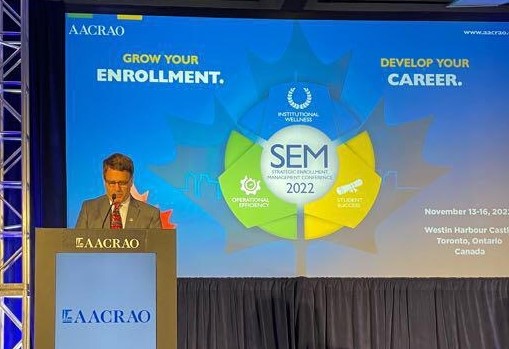
Subsequent writers have incorporated these words into their SEM definition: concepts and processes, institutional mission, and students’ educational goals (Bontrager, 2004); comprehensive process and academic contest (Dolence, 1993); comprehensive and coordinated process, and integration (Kerlin, 2008). The fundamental premise of SEM is that we must look at our enrolment health and sustainability throughout the entire student experience. Today, SEM has evolved to being a strategic component of institutional planning, resulting in:
- Instructional programs and services designed with intentionality, purpose, integration of effort, service efficiency, and positive interventions with students
- Integrated cross-campus collaborations and partnerships between faculty, administrators, and staff
- Use of assessment information-driven decision making
- Understanding how campus cultures impact enrolment management efforts
- Importance of shared leadership at multiple levels
Let’s simplify. The Cheshire cat in Lewis Carroll’s Alice in Wonderland says, “If you don’t know where you are going, any road will take you there.” Yogi Berra, of New York Yankees fame, adds “If you don’t know where you are going, you might wind up someplace else.” And today, we have got some great places to go!
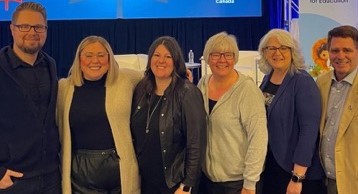
With my glass is half full approach, I can see some magical destinations. The first one is all about social justice. When we started doing SEM in the late 1970s, higher education was still a place where only some could go. Today, the door is open for many more, but not all. We need to put our collective heads together to ensure that our doors, both at the front end and at completion, are open to all who wish to continue their education. This includes Indigenous and racialized students, low-income and rural students, first-generation learners, and so many more. Second, we need to find ways to mature SEM into what many of us hoped it would become; namely, a managerial and educational framework. We are pretty much there with the former but have more distance to go to achieve the latter. SEM could be and should be a contributor to both of these goals.
Let me end with a passage from “The Effectiveness of SEM in Canada: Reflections from the Field” (2022, 53) that captures a possible future direction that the SEM community can traverse in the years ahead.
As the changing economy, politics, and student demographics have hit our institutions, it is ironic that we have been reluctant to explore difficult decisions and be truly strategic. Over the past few years, we have seen institutions of all types respond to these shifting pressures in similar ways–looking to international markets to replace domestic students, trying to rebrand and evolved into a different type of institution (changing from two-year to a four-year college, or an undergraduate into a graduate research institution), focusing on student retention. Can we use the SEM toolbox in new and innovative ways? We hope that the insights provided by SEM professionals across Canada will help higher education colleagues in institutions coast-to-coast build strategic plans that support students and institutions.
-Clayton Smith
References:
Bontrager , B. ( 2008 ). A definition and context for current SEM practice. In B. Bontrager (Ed.), SEM and institutional success: Integrating enrollment, finance, and student access. Association of Collegiate Registrars and Admissions Officers.
Dolence, M. G. (1993). Strategic enrollment management: A primer for campus administrators. American Association of Collegiate Registrars and Admissions Officers and Datatel.
Hossler, D., & Bean, J. P. (1990). The strategic management of college enrollments. Jossey-Bass.
Kerlin, C. (2008). Community college roadmap for the enrollment management journey. College and University, 83(4), 11.
University Degree v. University Education
In this blog, I share thoughts written by Shaun Smith, a recent University of Windsor graduate, on the differences between a university degree and a university education. It is inciteful and will likely result in some important reflections being made on the university student experience.
-Clayton Smith
Six years ago I sat in a large classroom surrounded by other recently-graduated high school students entering my program and listened to one presenter after another speak a variation of the same thing, “I wish I’d gotten involved sooner.” These presenters themselves were older students, about to leave university and go on either into the workforce or further education, and at the time, I couldn’t fully comprehend what exactly it was that they were attempting to say. One completed undergraduate degree later, when I was working with incoming high school students myself, I found myself telling them the same thing I had been told when I was in their position.
What these presenters by and large were saying as a collective was that they felt as though they had missed out on certain aspects of university life early in their time on campus. That their hesitation to reach back when the opportunities reached out had cost them in various personal, academic, and professional ways. It was only later, in their third or fourth years, did they fully take advantage of these opportunities.
Despite the advice of the presenters, my time in university began to play out in a very similar way. I was a commuter student, whose first-year mandatory classes were organized by my faculty to be in convenient windows of time (e.g. 8:30 AM-1 PM), which meant that outside of these windows, I perceived there to be little reason why I should remain on campus. Certainly, my fellow students also felt this way, as our faculty building was virtually deserted after 3 PM every day, when the final class had ended. As a true commuter student, I went to campus for class, and left as soon as I could. That pretty accurately describes the first two years of my undergraduate, I even studied at home, or with one or two of my classmates off-campus.
Said differently, I was in the process of earning a university degree. My grades were good, and I had worked hard enough in my second year that my name showed up on the Dean’s List for the first time. By any academic measure, I was well on track to graduation.
In third-year, however, something changed. Although I had a reasonably positive and fulfilling social life (primarily off-campus), the decision was made to make more of an effort on campus as well. I had always played intramural sports, but now I found myself hanging out with the people I knew there outside of the gym or soccer pitch, which opened up an entire community to me (who wound up becoming an incredible source of social support for me during the COVID-19 pandemic). I had always done due diligence in my classes, but when a professor asked if any of us were interested in competing in a case competition at another university, this time I thought, “why not?” instead of “that’s not for me.” Instead of leaving campus when my classes were completed, I began to actively look for things to do, which resulted in me doing everything from judging academic debates to participating in mental health initiatives for faculties that were not even my own. I went to buildings on campus I never had before through electives that I found genuinely fascinating, and unlike my first two years, actually made an effort to be a part of those groups instead of dipping upon the conclusion of the class. This, for the first time, actually opened up the entire university to me as opposed to just my own department.
I could go on, but for the sake of brevity, will instead summarize by saying that this was every day. My university experience went from a primarily class-based academically grounded experience to a socially diverse and entirely unpredictable day-to-day experience with people I perhaps had just met that morning, doing activities that the previous version of myself could not have possibly seen himself participating in.
Perhaps this sounds stressful. Perhaps it seems as though my academics would suffer, that this spontaneity where I departed my home every morning having no idea how the day would play out could only create harm towards the goal that every student has when they first come to university: the degree.
The complete opposite was true.
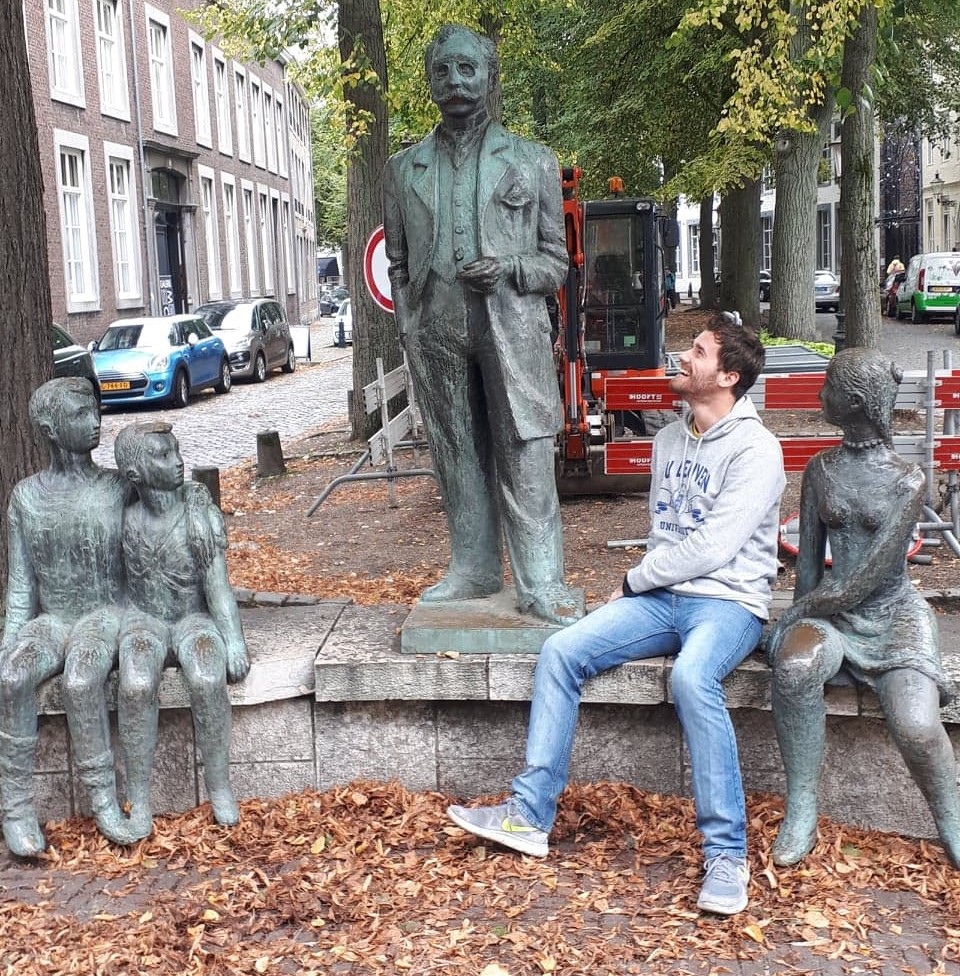
I became significantly happier. My grades skyrocketed. I went from being an above-average student to one of the best in my faculty. I made friends from every corner of campus, and because of the international nature of the university, every corner of the world. My professors not only learned my name, but began offering research opportunities and academic-related guidance that had always been there, but I hadn’t previously had the gumption to take advantage of. For the first time, I realized what those senior students had been trying to convey – that there is a significant difference between a university degree and a university education.
A university degree is something we all know. It’s a piece of paper that signifies that an individual has undergone an accepted curriculum and passed. But that’s all it is.
University education is something else entirely. Yes, it is everything that happens inside of the classroom, but more importantly, it’s everything that happens outside said classroom.
When I graduated from university, I had a collection of skills that I had learned there, but the vast majority of them I obtained from the education, not from the degree. The university degree taught me important skills: work ethic, consistency, specialized knowledge, and showing up. The university education taught me everything else.
When I took part in the “real world” this collection of skills proved invaluable. Interpersonal dynamics in particular have played a strong role, and the social environment of a diverse campus is the perfect place to cultivate such a skill. Of course, there are skills beyond that that has drastically improved everything from my overall adaptability in both professional and personal situations. Everything from my public speaking to my comfortability with challenging my own worldview has its root in my university education.
If this is still somewhat unclear, refer to the age-old conflict between intelligence and wisdom. If intelligence is the presence of knowledge, and wisdom is the ability to apply it, the university degree is the presence of knowledge in an individual, and the university education is the skills from which one can apply that knowledge most effectively.
Even as a student I became aware of all this. The question following my third year was how to maximize this education while I still was in the opportunity-laden university environment. For me, it resulted in my going on a student exchange to Belgium (something that I in my first-year would have been both impressed and terrified by) for my final undergraduate year. To say that it was stepping outside of my comfort zone is the understatement of the century, but it certainly maximized the university education aspect, and I look back on years three and four as the best of my life…so far.
Fast-forwarding to the current day, as I apply for positions and look to start what I hope is a long and successful professional career, I am often relying on my university education, and my prospective employers are too. No HR or management person has cared one bit what my GPA was, in fact, I’ve never been asked. However, they care very strongly about one’s ability to solve their problems, and very rarely is that solution specialized knowledge. It is instead one’s ability to problem solve complex and ever-evolving challenges and to be able to do so as part of some type of team.
My university degree prepared me only in part for that. My university education absolutely finished the job.
-Shaun Smith
Teaching Through the Screen
Earlier this week, during the virtual Fierce Education conference titled, Higher Education: Helping Faculty Navigate top Challenges in this New Blending Learning Environment, I had the opportunity to take in a talk presented by Sean Michael Morris, vice-president, academics at Course Hero. In his presentation, “Teaching through the Screen: Engaging Imagination to Engage Students,” Sean spoke about critical pedagogy as a humanizing pedagogy; that our focus should be on “seeking the human behind the screen, the human behind the bureaucracies of education, the human behind behaviorist technologies.” So, put another way, we should not teach to the screen (after all it is just a digital tool!), but look through it to those behind the screen who we are teaching. Only by changing our perception of online learning will we be truly able to engage our students. Wow, what a revelation!

Looking into the distance at the Cliffs of Moher, Ireland
Sean introduced us to Maxine Green who wrote in 2000 that “Our obligation today is to find ways of enabling the young to find their voices, to open their spaces, to reclaim their histories in all their variety and discontinuity” (Releasing the Imagination, 120). Imagination, as a “practice of freedom,” can inspire us to change the way we reach our learners. With the COVID-19 experience and our two-year pivot to online learning, this is more needed today than ever.
He then reminded us of what Jesse Stommel said about starting by trusting our students and emphasized that students are producers of knowledge, not just consumers of knowledge. Remembering that the more we know, the less we imagine, can be a powerful learning concept. Engaging students in a learning partnership is empowering for both learners and instructors. In a 2014 interview, Stommel commented:
Learning is always a risk. It means, quite literally, opening ourselves to new ideas, new ways of thinking. It means challenging to engage the world differently. It means taking a leap, which is always done better from a sturdy foundation. This foundation depends on trust – trust that the ground will not give way beneath us, trust for teachers, and trust for our fellow learners in a learning community.
-Jesse Stommel
So, what if we trusted our students as co-learners and used our imagination to see through the screen?
While this may have been true pre-pandemic, it is even more true now. The days of students coming to us to attend in-person classes in university lecture halls have probably changed. An increasing number of students will probably be seeking online courses, be they synchronous, asynchronous, or blended. They will be the new traditional learners in post-secondary or tertiary learning. We will need to trust them and encourage their learning by “seeking the human behind the screen.”
I am ready!
-Clayton Smith
The Changing Roles of Higher Education
After nearly two years of teaching exclusively online, I began teaching in person today. A little nervous but pumped regarding the prospect of seeing students in person again.
This led me to think about what kind of experience students will want in this near-to-the-end pandemic world we are entering. It was then that I came across an article, written by Dana Abdrasheva, Diana Morales, and Emma Sabazlieva, in University World News, an online newsletter, that led off with the title, How Do Students Want Universities to Change in Future?
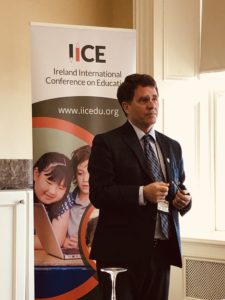
This article presented a summary of a UNESCO report, Thinking Higher and Beyond: Perspectives on the Futures of Higher Education to 2050, which presented the views of students from around the world who participated in one of 55 focus group consultations conducted in 2020-21 as part of UNESCO’s Futures of Higher Education project. Some of the themes identified include:
- Campus experience will be transformed: Campus experiences will be complemented (but not replaced) by integrating technology into teaching and learning.
- A shift from mobility to engagement: Recognized that “mobility will turn into connectivity” and that travelling to other countries might not be necessary to acquire an international educational degree.
- Co-creation of learning environments: “New forms of knowledge construction, based on cooperative and collaborative relationships between teachers-students and students-students” will result in more co-creation of learning.
- Higher education and the labour market: Links between higher education and the job market are of prime importance, with many calling for more “market-ready” preparation.
- Global processes linked to local communities: Connectivity is seen as the big takeawaywith calls for increased connections between global and local communities.
The big question is whether we, in higher education, are ready to attend to students’ views on the changing roles of higher education.
Throughout the pandemic, I can recall conversations with students who lamented about the loss of in-person instruction, while others asked for their courses to remain online. This led me to conclude that it is not one way or another, but looking at what is needed and then delivering the student experience as close to that vision as possible. This does not mean we will return fully in person, but neither does it mean we will stay fully online. We need to do what is best for our students, and in doing that, we will find a higher education experience where the campus experience is transformed, our focus is placed on engagement, we engage with our students as partners in learning, and connect our work with the labour market and global communities.
These are fascinating times!
-Clayton Smith
Recent Comments